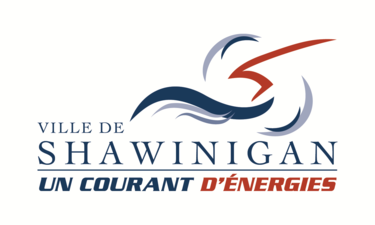GEOJSON
Type of resources
Available actions
Topics
Keywords
Contact for the resource
Provided by
Formats
Representation types
Update frequencies
status
-
The Costal Flooding Risk Index in GeoJSON format is a geo and time referenced polygon product issued by the Meteorological Service of Canada (MSC) to articulate the coastal flooding risk, impact and probability. Products are issued daily by Storm Prediction Centres and intended to provide early notification, out to 5 days, of coastal flooding due to astronomical tide, storm surge and wave impacts.
-

MetNotes are a geo- and time-referenced, free form polygon product issued by MSC that complement today's location-based dissemination systems. The concise text of a MetNote (similar to a Tweet) is consistent with communication today where people are seeking information at a glance. Meteorologists will issue a MetNote to add contextual and/or impact information to complement the public forecast that is valid over a specific area, for a specific time range.
-

Climate observations are derived from two sources of data. The first are Daily Climate Stations producing one or two observations per day of temperature, precipitation. The second are hourly stations that typically produce more weather elements e.g. wind or snow on ground.
-

Polyline layer of the road network drawn at the center of each lane on the territory of the city of Shawinigan. ! [Shawinigan logo] (https://jmap.shawinigan.ca/doc/photos/LogoShawinigan.jpg) **Collection method** From Autocad digital files **Attributes** * `objectid` (`integer`): * `id_troncon` (`integer`): Trunk ID * `st_length (shape) `(`double`): * `street_toponymy` (`char`): * `partial_street` (`char`): * `Essential_street` (`char`): * `minimum_street` (`char`): * `balance_street` (`char`): * `sector` (`char`): * `request_for_jmap` (`char`): * `a` (`char`): * `of` (`char`): * `nocivicpairde` (`char`): * `nocivicpaira` (`char`): * `nocivicodde` (`char`): * `nocivicoda` (`char`): * `number_ways` (`smallint`): * `unique_sense` (`char`): * `owner` (`char`): * `functional classification` (`char`): * `typesurface` (`char`): * `typestructure` (`char`): * `bus` (`char`): * `trucking` (`char`): * `area_m2` (`integrate`): * `width_m` (`smallint`): * `draining` (`char`): * `coderives` (`char`): * `rive1dlength_m` (`smallint`): * `rive1slength_m` (`smallint`): * `rive2dlength_m` (`smallint`): * `rive2slength_m` (`smallint`): * `rive1dmaterial` (`char`): * `rive1smaterial` (`char`): * `rive2dmateriau` (`char`): * `rive2smateriau` (`char`): * `rive1dtype` (`char`): * `rive1stype` (`char`): * `rive2dtype` (`char`): * `rive2stype` (`char`): * `vocation` (`char`): * `statusvaluation` (`char`): * `year_origin` (`char`): * `year_reconstruction` (`char`): * `year_resurfacing` (`char`): * `yeare_pulveripavage` (`char`): * `year_origin_estimate` (`char`): * `yeare_planagepavage` (`smallint`): * `paving manager` (`char`): * `yeare_1e_pavage` (`char`): * `notes` (`char`): * `speed` (`smallint`): * `hierarchical_level` (`char`): Hierarchical level For more information, consult the metadata on the Isogeo catalog (OpenCatalog link).**This third party metadata element was translated using an automated translation tool (Amazon Translate).**
-

A Virtual Climate station is the result of threading together climate data from proximate current and historical stations to construct a long term threaded data set. For the purpose of identifying and tabulating daily extremes of record for temperature, precipitation and snowfall, the Meteorological Service of Canada has threaded or put together data from closely related stations to compile a long time series of data for about 750 locations in Canada to monitor for record-breaking weather. The length of the time series of virtual stations is often greater than 100 years. A Virtual Climate station is always named for an “Area” rather than a point, e.g. Winnipeg Area, to indicate that the data are drawn from that area (within a 20km radius from the urban center) rather than a single precise location.
-

The daily climate records database, also known as Long Term Climate Extremes (LTCE), was developed to address the fragmentation of climate information due to station changes (opening, closing, relocation, etc.) over time. For approximately 750 locations in Canada, "virtual" climate stations have been developed by joining (threading) climate data for an urban location, from nearby stations to make long-term records. Each long-term record consists of the extremes (record values) of daily maximum/minimum temperatures, total precipitation and snowfall for each day of the year. Many of the longest data sets of extremes date as far back as the 1800s. This data provides the daily extremes of record for Precipitation for each day of the year. Daily elements include: Greatest Precipitation.
-

Anomalous weather resulting in Temperature and Precipitation extremes occurs almost every day somewhere in Canada. For the purpose of identifying and tabulating daily extremes of record for temperature, precipitation and snowfall, the Meteorological Service of Canada has threaded or put together data from closely related stations to compile a long time series of data for about 750 locations in Canada to monitor for record-breaking weather. Virtual Climate stations correspond with the city pages of weather.gc.ca. This data provides the daily extremes of record for Temperature for each day of the year. Daily elements include: High Maximum, Low Maximum, High Minimum, Low Minimum.
-

Point layer of parking lots reserved for people with reduced mobility on the territory of the city of Shawinigan. ! [Shawinigan logo] (https://jmap.shawinigan.ca/doc/photos/LogoShawinigan.jpg) **Collection context** Governed by traffic regulations + Update with the TP Excel file **Collection method** Location at the corresponding address **Attributes** * `objectid` (`integer`): * `street` (`char`): Street * `location` (`char`): Location * `Number` (`integer`): Number * `measur_c_c` (`char`): Measure * `duration` (`char`): For more information, consult the metadata on the Isogeo catalog (OpenCatalog link).**This third party metadata element was translated using an automated translation tool (Amazon Translate).**
-

This layer details Important Areas (IAs) relevant to key invertebrate species (which are not corals or sponges) in the Pacific North Coast Integrated Management Area (PNCIMA). This data was mapped to inform the selection of marine Ecologically and Biologically Significant Areas (EBSA). Experts have indicated that these areas are relevant based upon their high ranking in one or more of three criteria (Uniqueness, Aggregation and Fitness Consequences). The distribution of IAs within ecoregions is used in the designation of EBSAs. Canada’s Oceans Act provides the legislative framework for an integrated ecosystem approach to management in Canadian oceans, particularly in areas considered ecologically or biologically significant. DFO has developed general guidance for the identification of ecologically or biologically significant areas. The criteria for defining such areas include uniqueness, aggregation, fitness consequences, resilience, and naturalness. This science advisory process identifies proposed EBSAs in Canadian Pacific marine waters, specifically in the Strait of Georgia (SOG), along the west coast of Vancouver Island (WCVI, southern shelf ecoregion), and in the Pacific North Coast Integrated Management Area (PNCIMA, northern shelf ecoregion). Initial assessment of IAs in PNCIMA was carried out in September 2004 to March 2005 with spatial data collection coordinated by Cathryn Clarke. Subsequent efforts in WCVI and SOG were conducted in 2009, and may have used different scientific advisors, temporal extents, data, and assessment methods. WCVI and SOG IA assessment in some cases revisits data collected for PNCIMA, but should be treated as a separate effort. Other datasets in this series detail IAs for birds, cetaceans, coral and sponges, fish, geographic features, and other vertebrates. Though data collection is considered complete, the emergence of significant new data may merit revisiting of IAs on a case by case basis.
-

Standardized public places v1**This third party metadata element was translated using an automated translation tool (Amazon Translate).**
 Arctic SDI catalogue
Arctic SDI catalogue